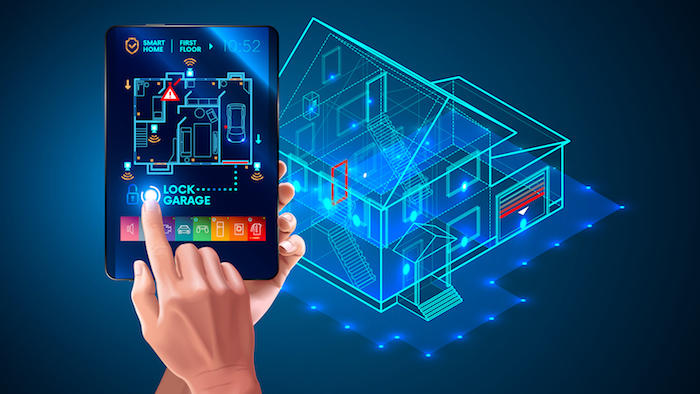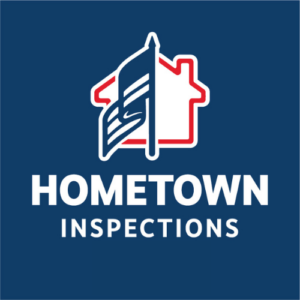The Rise of Smart Homes: What to Have Inspected Before You Buy
September 2024
In 2024, the concept of a “smart home” has become more than just a trend—it’s now a key feature that many homebuyers actively seek. Homes equipped with smart technology offer convenience, energy efficiency, enhanced security, and a glimpse into the future of living. However, like any traditional home feature, these advanced systems need thorough inspection before you buy to ensure they work properly and won’t lead to expensive repairs down the road. Whether you’re a homeowner or a real estate agent, understanding what to look for in a smart home inspection is essential.
Here’s a comprehensive guide to help you navigate smart home inspections.

The Smart Security System
Modern smart homes often include integrated security systems with cameras, doorbell video feeds, motion sensors, and automated locks. Inspecting these systems is crucial for both functionality and security.
- What to check:
- Are the cameras, sensors, and locks fully operational?
- Does the system respond correctly to triggers, such as movement or door openings?
- Is there any outdated or unsupported software?
- Confirm whether the security system can be easily transferred to the new owner or if it requires a separate contract.
- Potential Issues:
- Malfunctioning cameras or doorbell systems.
- Outdated security software that leaves the home vulnerable to cyberattacks.
The Smart Thermostat
Energy efficiency is one of the primary reasons buyers are attracted to smart homes. Smart thermostats, which learn the homeowner’s schedule and optimize temperature settings, can reduce energy bills. However, if they’re malfunctioning, they may become more of a burden than a benefit.
- What to check:
- Is the thermostat responsive to manual adjustments and app-based controls?
- Are there discrepancies between the displayed and actual home temperatures?
- Check for connectivity issues, as they can disrupt automatic schedules.
- Potential Issues:
- Faulty sensors causing incorrect temperature readings.
- Poor Wi-Fi connectivity affecting the functionality of the thermostat.
Smart Lighting Systems
Automated lighting systems are another popular smart home feature, allowing owners to control lights via apps or voice commands, set schedules, or create mood lighting. While smart lighting may seem straightforward, problems with wiring, connectivity, or compatibility can arise.
- What to check:
- Ensure all smart light bulbs, switches, and dimmers respond to voice commands or mobile controls.
- Test automation settings like motion-sensor activation or timed on/off functions.
- Assess compatibility with other smart home systems, such as Alexa or Google Home.
- Potential Issues:
- Poorly integrated systems that don’t communicate well with each other.
- Burnt-out or malfunctioning smart bulbs or switches.
Smart Appliances
Smart homes often include appliances like refrigerators, ovens, washing machines, and dishwashers that can be controlled remotely. While these appliances can offer convenience, they can also introduce complexity if they’re not properly maintained or inspected.
- What to check:
- Test connectivity to see if the appliances sync with the home’s Wi-Fi and smartphone apps.
- Ensure that all smart features (e.g., remote start, maintenance notifications) are functional.
- Verify that any software updates are current and that the appliances are still under warranty if applicable.
- Potential Issues:
- Software bugs causing appliances to malfunction.
- Unresponsive smart features or outdated technology that makes it difficult to find support.
Network Infrastructure
Smart homes rely heavily on a strong, stable internet connection, often supported by a central hub or smart router. Without a robust network infrastructure, many of the smart systems will struggle to perform optimally.
- What to check:
- Is the home equipped with a reliable internet service and modern router?
- Assess whether there are any dead spots in the home where the Wi-Fi connection is weak or nonexistent.
- Check if the home has a mesh Wi-Fi system to support devices in larger spaces.
- Potential Issues:
- Connectivity problems affecting smart systems across the home.
- Overloaded network from too many smart devices competing for bandwidth.
The Home’s Overall Connectivity (Z-Wave, Zigbee, or Wi-Fi)
Smart homes often rely on communication protocols such as Z-Wave, Zigbee, or Wi-Fi to ensure all devices work seamlessly together. Inspecting how these protocols are integrated into the home is vital for determining whether the smart features will continue functioning smoothly after you move in.
- What to check:
- Identify which protocol the home’s smart devices use (Z-Wave, Zigbee, or Wi-Fi).
- Test the communication between different smart devices to see if they respond as expected.
- Confirm that the home’s smart hub, if present, is up-to-date and capable of supporting future upgrades.
- Potential Issues:
- Compatibility problems between devices using different communication protocols.
- Outdated hubs that can’t support newer devices or software updates.
Data Privacy and Security
A crucial aspect of smart home inspections that is often overlooked is the security of the network and devices. Smart homes, while convenient, can also be vulnerable to cyberattacks if not properly secured.
- What to check:
- Review the home’s security setup, including password protections and encryption of the Wi-Fi network.
- Ensure all smart devices have updated firmware with the latest security patches.
- Verify whether the home uses two-factor authentication for accessing sensitive devices like cameras or locks.
- Potential Issues:
- Unsecured networks making the home vulnerable to hackers.
- Devices without proper encryption or authentication methods.
Ease of Use and Control Handover
When purchasing a smart home, it’s important to know how easily the control of smart systems can be transferred to the new homeowner. Sometimes, these systems are tied to the original owner’s accounts and require a formal transfer or reset process.
- What to check:
- Determine whether any devices are tied to the seller’s accounts that need to be reset or transferred.
- Check for clear instructions on how to take ownership of the home’s smart systems.
- Assess whether the smart devices are user-friendly and can be easily managed through a central app or hub.
- Potential Issues:
- Difficulty in transferring ownership of devices.
- Complex or confusing interfaces that make managing the smart home challenging for new owners.
Conclusion: Smart Homes Require Smart Inspections
The rise of smart homes in 2024 is exciting, offering enhanced convenience, security, and energy efficiency. However, these advanced systems come with their own unique set of inspection challenges. As a homebuyer or real estate agent, it’s essential to look beyond the traditional aspects of a home and thoroughly inspect all smart features to ensure they are working properly, secure, and transferable to new owners.
A professional home inspection that includes smart home systems will give you peace of mind and help you avoid costly repairs down the line. After all, even the most advanced smart technology can turn into a headache if it’s not functioning as intended. By taking the time to inspect these systems, you’ll ensure that your investment in a smart home truly pays off.
What a Home Inspector Can Check
- General Functionality: Home inspectors can check whether smart systems like lighting, thermostats, or security systems are operational. They can test whether these devices respond to basic commands or manual adjustments.
- Visual Inspections: Inspectors can look at the installation quality of smart systems, ensuring wiring, outlets, and hubs are properly placed and safely connected.
- Basic Connectivity: They can verify whether smart devices connect to the home’s network or mobile apps, though they may not dive deep into the home’s internet infrastructure.
- Security Hardware: Home inspectors can examine the physical components of security systems, such as cameras, motion sensors, and door locks, checking for signs of wear or malfunction.
When to Hire a Specialist
- Advanced Systems: If the home has a highly complex smart system—such as integrated home automation with custom software or proprietary hardware—a specialist might be needed to fully assess the system’s health and compatibility.
- Data Privacy and Cybersecurity: Home inspectors are typically not equipped to evaluate the network security of smart home systems. For this, you might need a cybersecurity expert or an IT professional who specializes in smart home security to check for vulnerabilities like weak encryption or unsecured devices.
- System Compatibility and Future-Proofing: A home automation specialist can help assess whether the current systems are compatible with future updates or new devices you might want to add, which a standard home inspector may not address.
- Internet Infrastructure: For detailed checks of the home’s Wi-Fi strength, dead zones, or whether a mesh network is needed, an IT professional or a specialist in smart home networks would be more suitable.
When a Combination Works Best
- A general home inspector can provide an overall view of the smart systems’ physical condition and basic functionality. However, for a deeper dive into tech-specific issues (such as network vulnerabilities or integration concerns), hiring a specialist is a good idea, especially if the smart home system is extensive or critical to your living experience.
Real estate agents can often recommend local specialists who can inspect these more technical aspects if needed.
